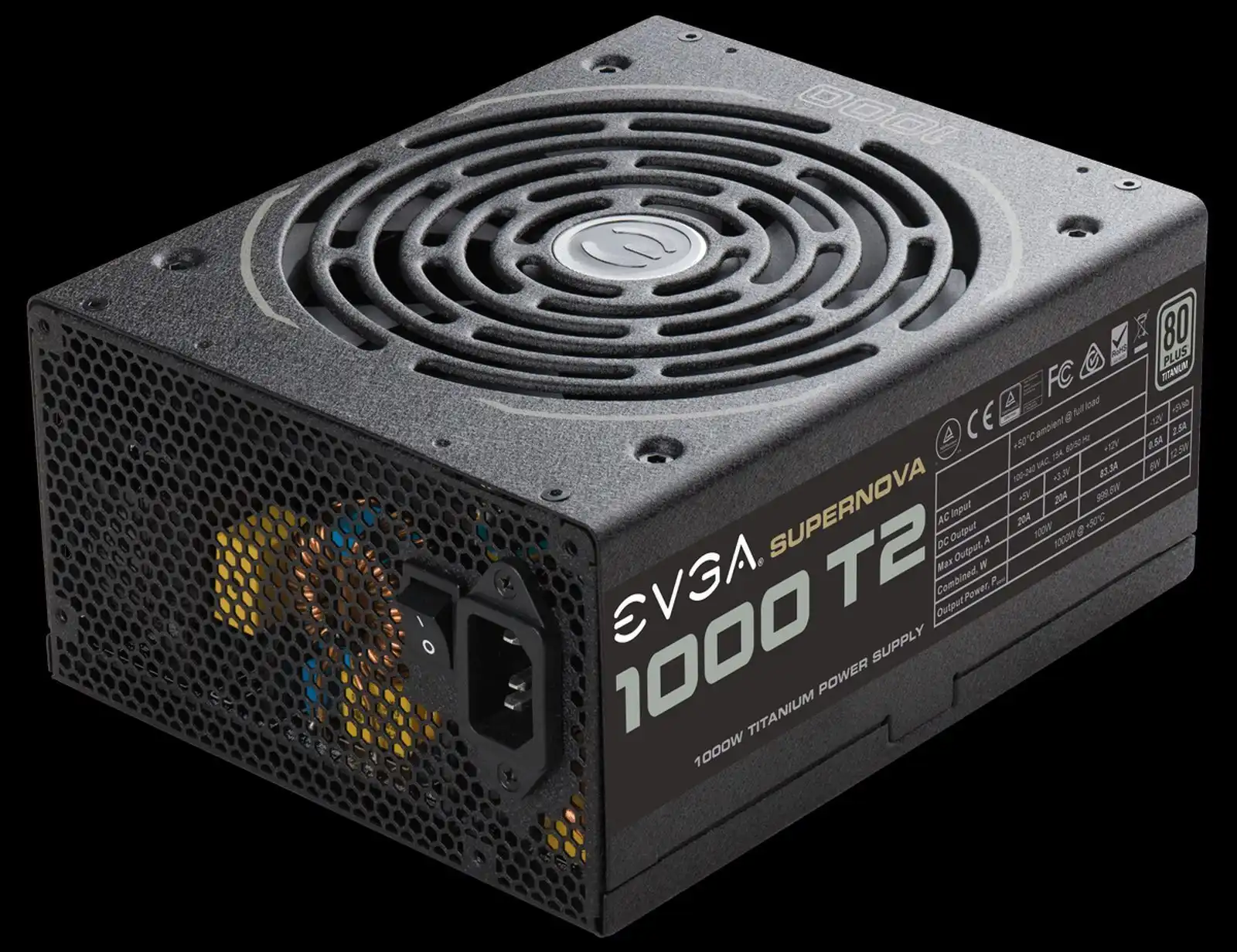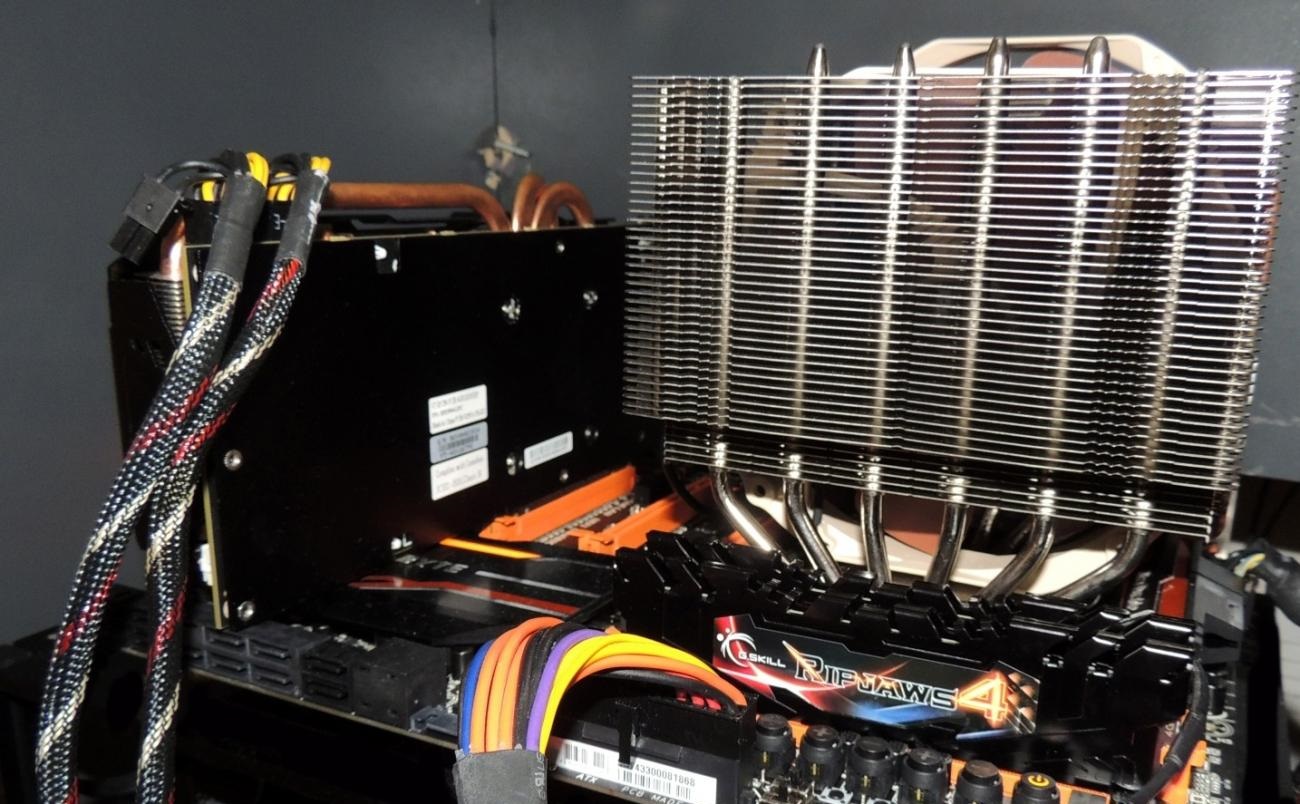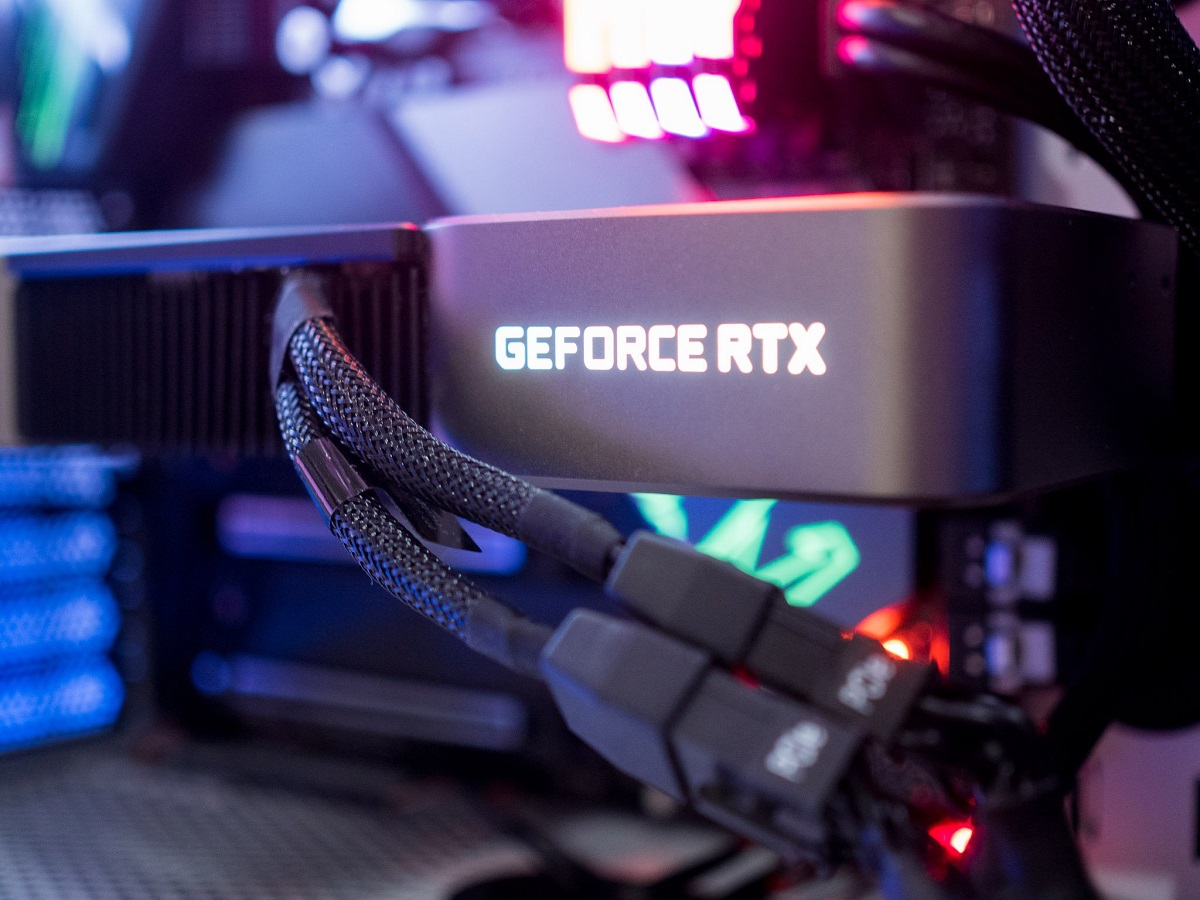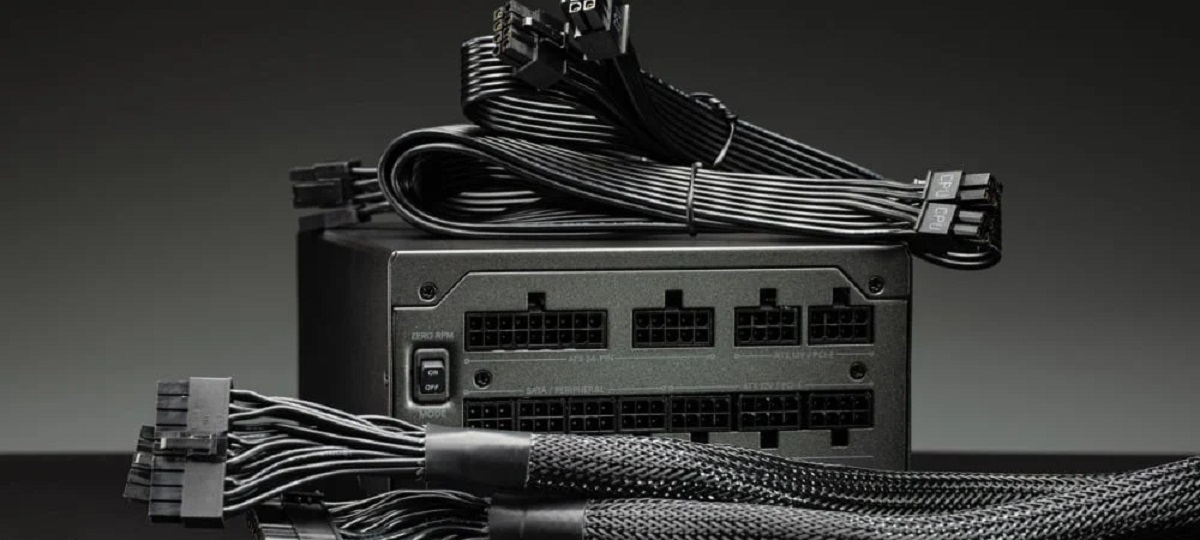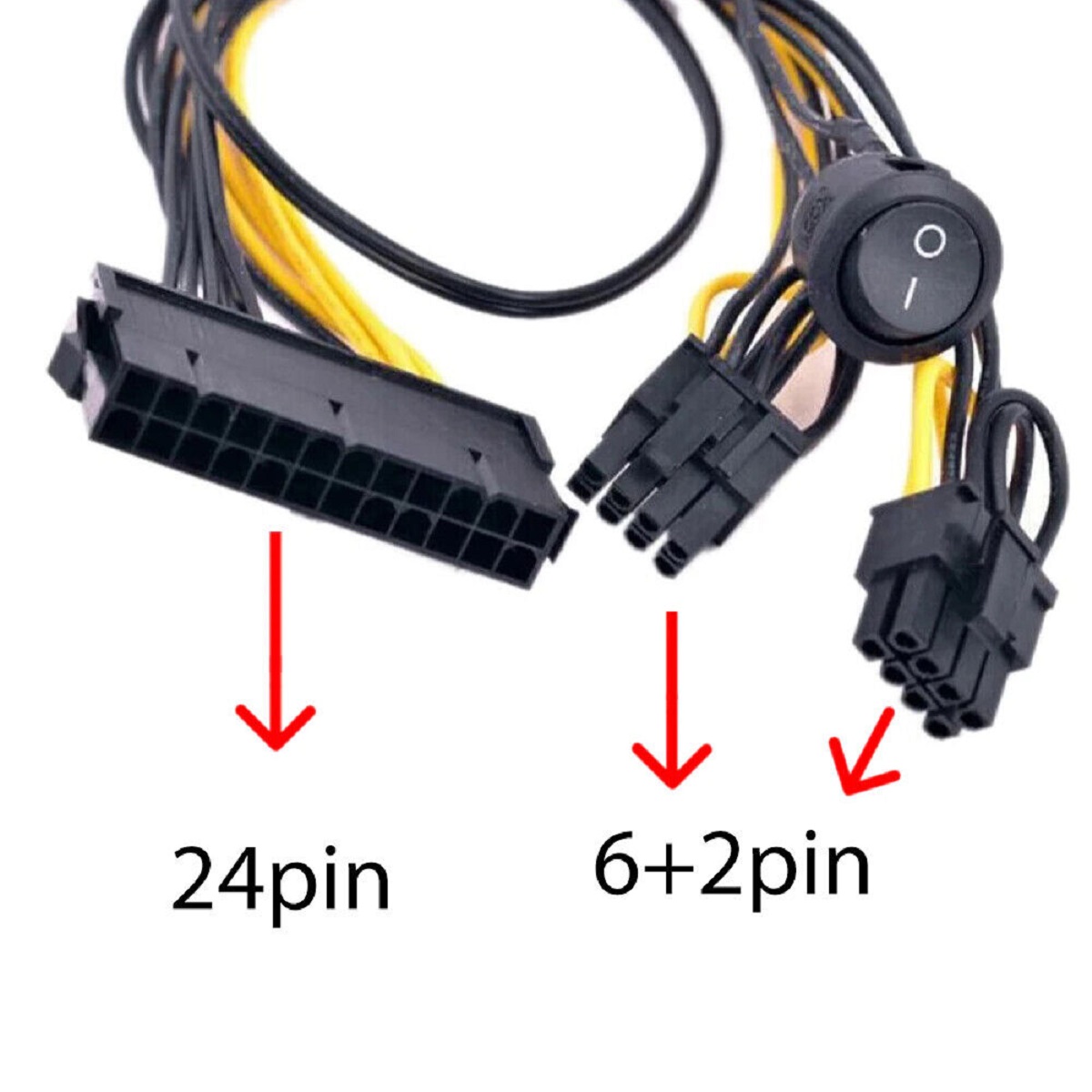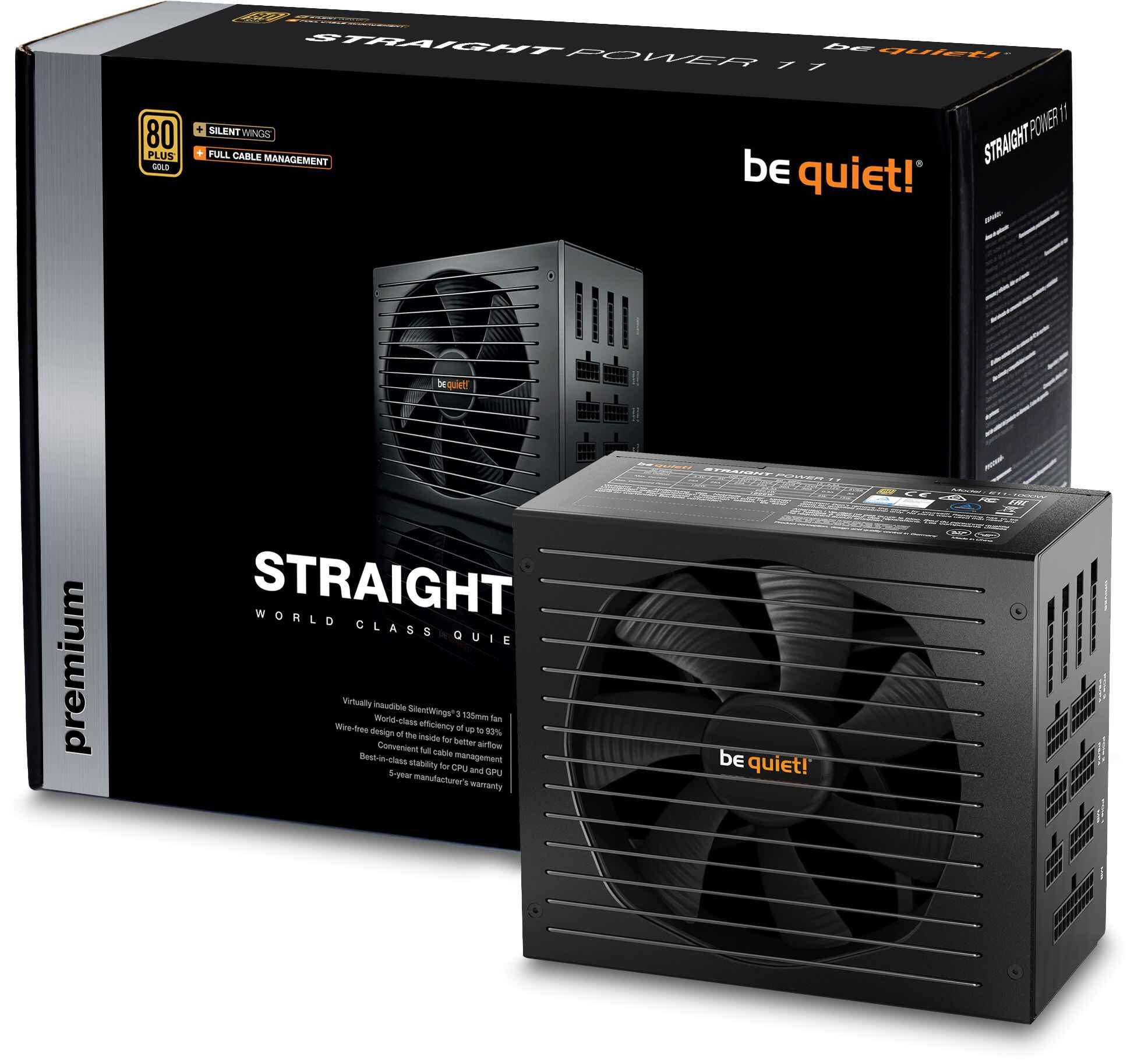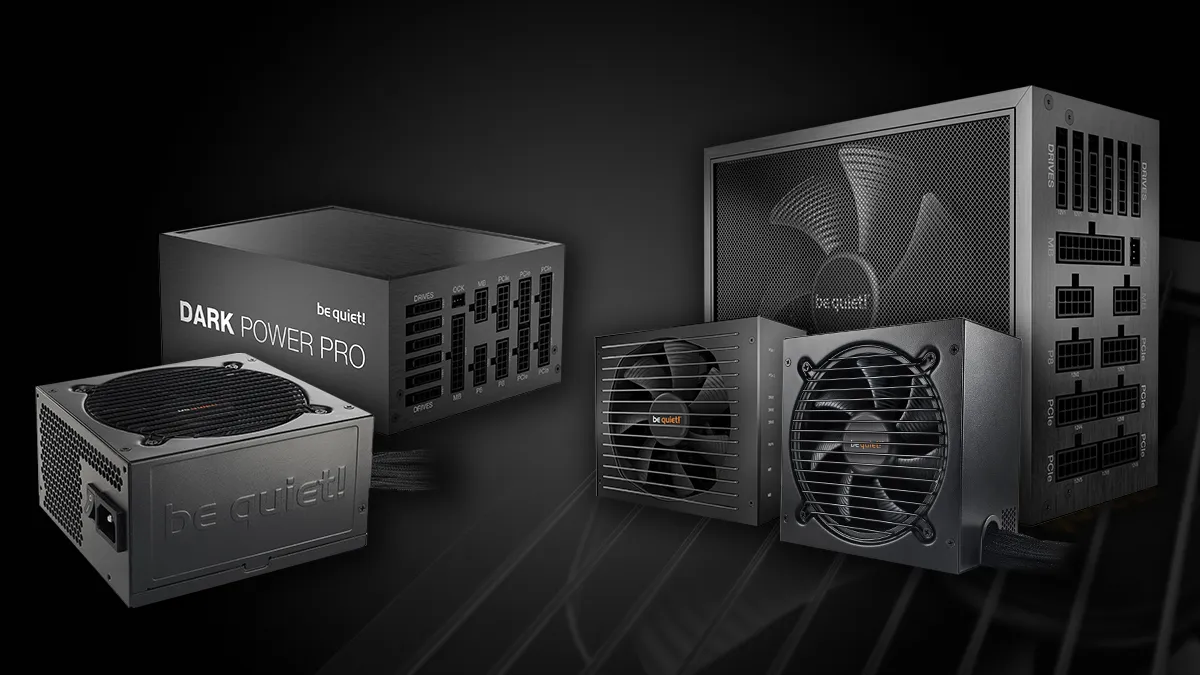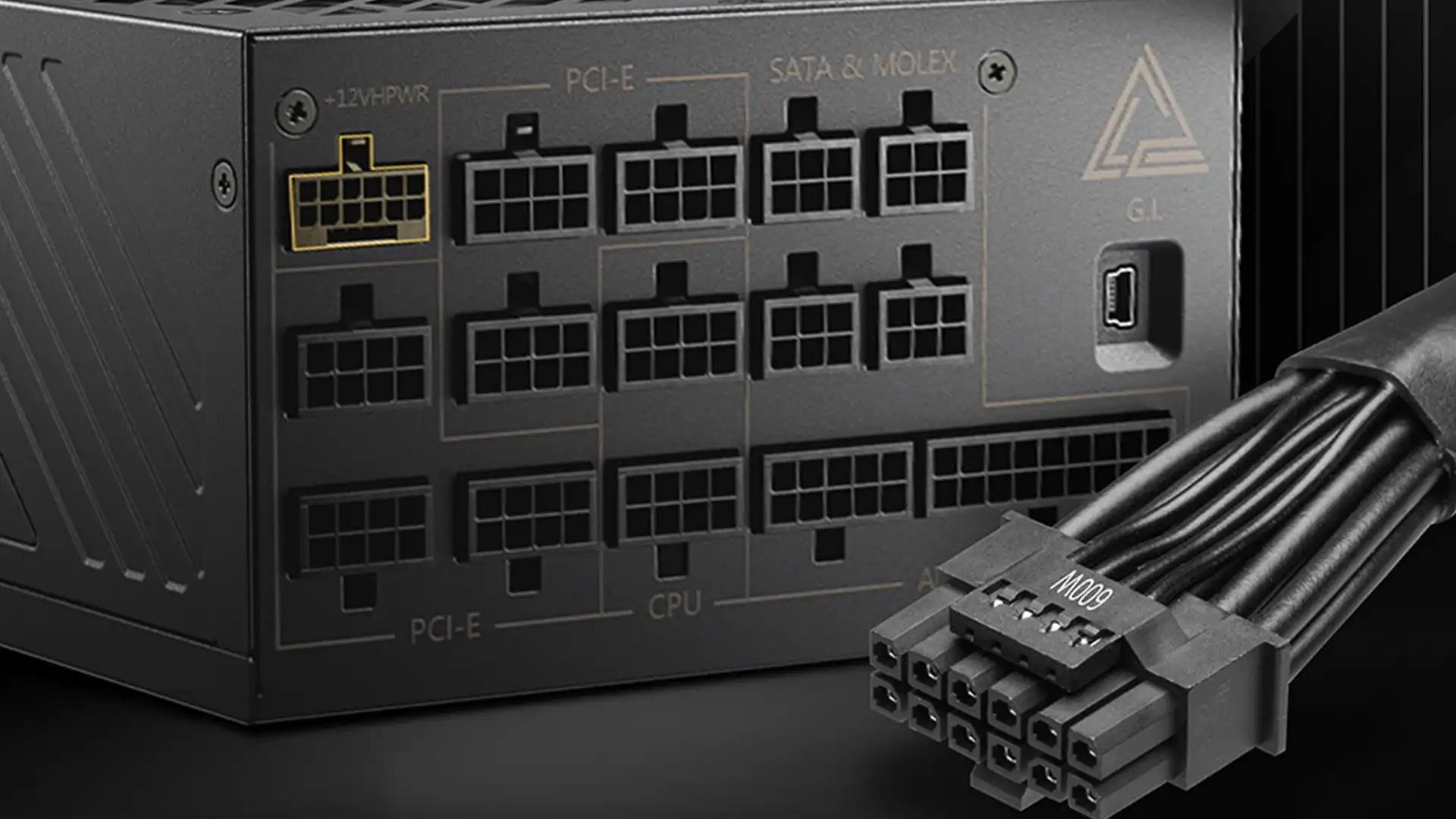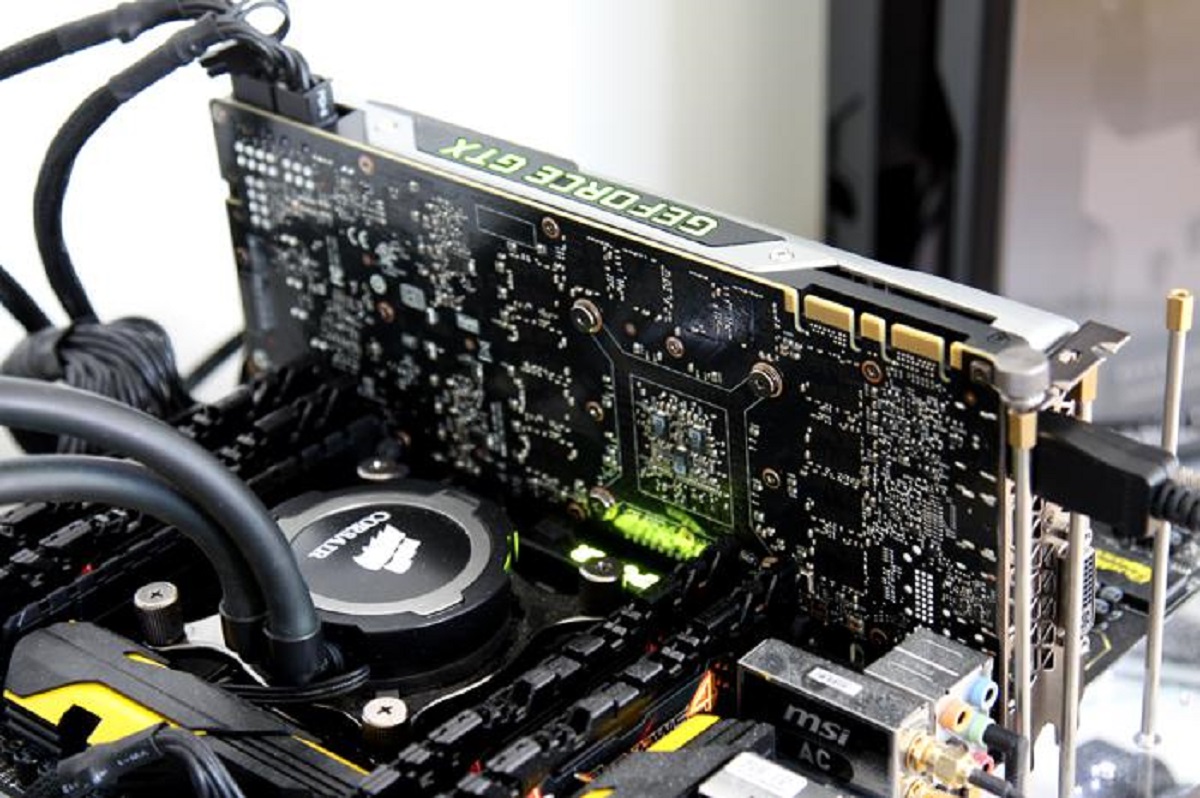Introduction
When it comes to overclocking your computer’s components, one crucial factor that often gets overlooked is the type of power supply unit (PSU) you choose. The PSU is responsible for supplying power to all the components in your system, and a suitable PSU can make a significant difference in the stability and performance of your overclocked setup.
What makes a PSU suitable for overclocking? How do different types of PSUs affect the overclocking potential of your system? These are some of the questions that we will explore in this article. We will provide an overview of the different PSU types, discuss the importance of choosing the right PSU for overclocking, and delve into the factors to consider when selecting a PSU for your overclocked setup.
Overclocking is a process in which you push your computer’s components beyond their default settings to achieve higher performance. This can involve increasing the clock speed of your CPU, GPU, or RAM, as well as tweaking voltage levels. However, overclocking generates more heat and places higher demands on the power supply. Therefore, it becomes crucial to choose a PSU that can handle the increased power requirements and maintain stability under heavy loads.
In this guide, we will explore different PSU types, including single-rail and multi-rail PSUs, and discuss the pros and cons of each. We will also address whether a higher wattage PSU is necessary for overclocking, as well as the benefits of modular and non-modular PSUs in an overclocked system. Additionally, we will touch on the level of efficiency needed for overclocking and how cooling and noise levels are influenced by the type of PSU you choose.
By the end of this article, you should have a better understanding of the importance of selecting the right PSU for overclocking and the factors to consider when making your decision. So, let’s dive in and explore which PSU type is suitable for overclocking and how it can elevate your system’s performance to new heights.
Overview of PSU Types
Before we delve into the specific considerations for overclocking, let’s start by understanding the different types of power supply units (PSUs) available in the market. This will provide a foundation for our subsequent discussions on selecting the right PSU for your overclocked setup.
The two main types of PSUs are single-rail and multi-rail. Single-rail PSUs have a single +12V rail that delivers power to all the components simultaneously. This means that the entire system’s power draw is handled by a single rail, ensuring maximum power availability to all components. On the other hand, multi-rail PSUs have multiple +12V rails that distribute power across various components, dividing the load between the rails.
Single-rail PSUs are generally more favored for overclocking due to their ability to provide a higher overall power output. They are typically more efficient in delivering power to high-performance components during demanding tasks like gaming or rendering. However, this does not mean that multi-rail PSUs are not suitable for overclocking. In fact, they can provide better protection against short circuits and overload situations since the rails are divided to handle specific components or sections of the system.
Another important aspect to consider is the efficiency of the PSU, which is usually denoted by the efficiency rating. Common efficiency ratings include 80 PLUS Bronze, Silver, Gold, Platinum, and Titanium. These ratings indicate how well the PSU converts AC power from the wall outlet to DC power for your computer components. Higher efficiency ratings mean less wasted energy, lower heat generation, and potentially lower electricity bills. When overclocking, it’s advisable to choose a PSU with a higher efficiency rating to ensure stable power delivery and minimize the risk of power-related issues.
Modularity is another feature to consider when selecting a PSU for overclocking. Modular PSUs allow you to detach and attach the cables as needed, providing a cleaner and more organized setup. This not only improves airflow within the system but also makes cable management easier. Non-modular PSUs come with fixed cables, which can sometimes lead to clutter and hinder proper airflow, especially in smaller cases. While modularity is not directly related to overclocking performance, it contributes to a well-optimized and efficient system overall.
In this section, we provided an overview of the different PSU types available, including single-rail and multi-rail PSUs. We also touched on the importance of efficiency ratings and the benefits of modular PSUs. Understanding these different types will help you make an informed decision when selecting a PSU for your overclocked system. In the next section, we will discuss the specific factors to consider when choosing a PSU for overclocking, helping you optimize your system’s performance and stability.
The Importance of a Suitable PSU for Overclocking
When it comes to overclocking your system, choosing a suitable power supply unit (PSU) is of paramount importance. The PSU is responsible for delivering stable and sufficient power to all the components in your system, ensuring their optimal performance and preventing potential damage. In the context of overclocking, where components are pushed beyond their default settings, the importance of a suitable PSU becomes even more critical.
One of the key reasons why a suitable PSU is vital for overclocking is the increased power demand. Overclocking involves pushing the limits of your CPU, GPU, and RAM, which inevitably leads to higher power consumption. Without a PSU that can handle the increased load, you risk unstable power delivery, voltage fluctuations, and even system crashes. A suitable PSU ensures that the overclocked components receive a consistent and reliable power supply, minimizing the risk of instability and damage.
Furthermore, an overclocked system generates more heat due to the increased power consumption and voltage levels. A suitable PSU plays a crucial role in managing this heat by providing efficient cooling mechanisms. High-quality PSUs are designed with effective cooling solutions, such as larger fans, heat sinks, and improved airflow, to dissipate the excess heat generated by the overclocked components. This helps in maintaining optimal temperatures and prolonging the lifespan of the system.
Additionally, a suitable PSU provides the necessary power headroom for overclocking. Overclocking can significantly increase the power draw of your components, especially the CPU and GPU. Without a PSU that can supply sufficient power, you may encounter power delivery issues that can lead to system instability and throttling. A suitable PSU with higher wattage ensures that your overclocked system has enough power reserves to handle peak power demands, providing a stable and reliable experience.
Choosing a suitable PSU also means considering the quality and reliability of the unit. Cheap or low-quality PSUs may not provide consistent power delivery or offer reliable protection mechanisms, increasing the risk of voltage fluctuations, short circuits, and component failures. Investing in a high-quality PSU from reputable brands ensures reliability, efficient power delivery, and adequate protection for your overclocked system.
In summary, a suitable PSU is essential for overclocking due to its ability to provide stable power delivery, manage heat, offer power headroom, and ensure overall system reliability. By choosing a high-quality PSU that can handle the increased power demands and optimize cooling, you can unleash the full potential of your overclocked system while minimizing the risks of instability and component damage. In the next section, we will explore the differences between single-rail and multi-rail PSUs, helping you make an informed choice for your overclocked setup.
Single-Rail vs Multi-Rail PSUs
When it comes to power supply units (PSUs) for overclocking, one important consideration is whether to choose a single-rail or multi-rail PSU. The main difference between the two lies in how they distribute power to the components in your system.
A single-rail PSU has a single +12V rail that delivers power to all the components simultaneously. This means that the entire system’s power draw is handled by a single rail. Single-rail PSUs are known for their ability to provide higher overall power output, making them a popular choice for overclocking. They deliver a greater amount of power to high-performance components, particularly during demanding tasks such as gaming or rendering.
On the other hand, multi-rail PSUs divide the +12V rail into multiple rails, each responsible for supplying power to specific components or sections of the system. The division of power distribution provides better protection against short circuits and overload situations. If one rail is overloaded, it will shut down independently, preventing other components from being affected. Multi-rail PSUs are often seen as more reliable in terms of component protection, but they may have a lower overall power output compared to single-rail PSUs.
So, which type of PSU is better for overclocking? The answer depends on your specific requirements and preferences. Single-rail PSUs are generally favored for overclocking due to their ability to deliver higher power outputs. They provide a consistent and robust power supply, ensuring that your overclocked components receive the necessary power to perform at their best. However, it’s important to choose a single-rail PSU with sufficient wattage to handle the increased power demands of your overclocked system.
Multi-rail PSUs, on the other hand, offer an added layer of protection by dividing the power delivery. This can be advantageous in preventing a major system failure in the event of a short circuit or overload. Although multi-rail PSUs may have a lower overall power output compared to single-rail PSUs, they can still provide sufficient power for most overclocking scenarios. If you prefer the added protection and peace of mind that multi-rail PSUs offer, they can be a suitable choice for your overclocked setup.
Ultimately, the decision between single-rail and multi-rail PSUs comes down to personal preference, system requirements, and the level of protection you desire. Both types have their advantages and can be suitable for overclocking, as long as you choose a high-quality PSU from a reputable brand.
In the next section, we will discuss the important factors to consider when choosing a PSU for overclocking, which will further aid you in making an informed decision for your system.
Factors to Consider When Choosing a PSU for Overclocking
Selecting the right power supply unit (PSU) for your overclocking needs requires careful consideration of several factors. These factors will help ensure that your PSU can handle the increased power demands of your overclocked components while maintaining stability and efficiency. Here are some important factors to consider when choosing a PSU for overclocking.
1. Wattage: The wattage rating of a PSU indicates the maximum amount of power it can deliver to your system. For overclocking, it’s recommended to choose a PSU with higher wattage to provide sufficient headroom for increased power demands. Calculating the approximate wattage requirements of your overclocked system can help you determine the appropriate PSU wattage.
2. Efficiency Rating: PSU efficiency is an important consideration not only for power consumption but also for the overall performance of your system. Look for PSUs with high efficiency ratings, such as 80 PLUS Bronze, Silver, Gold, Platinum, or Titanium. Higher efficiency levels mean less wasted energy, better heat management, and potentially lower electricity bills.
3. Quality and Reliability: Investing in a high-quality PSU from a reputable brand is crucial for stable and reliable power delivery. Cheap or poorly made PSUs may not provide consistent power or adequate protection mechanisms, which can lead to system instability and potentially damage your components. Ensure you choose a PSU with reliable protection features such as overvoltage, overcurrent, and short-circuit protection.
4. Modular vs. Non-modular: Modular PSUs offer the flexibility to detach and attach cables as needed, resulting in a cleaner and more organized system. This improves airflow and simplifies cable management. Non-modular PSUs come with fixed cables, which may lead to cable clutter and hinder airflow, especially in smaller cases. Consider your cable management preferences and the size of your system when choosing between modular and non-modular PSUs.
5. Cooling and Noise Levels: Overclocking generates more heat, making efficient cooling crucial. Look for PSUs with larger fans, heat sinks, and good airflow design to dissipate heat effectively. Additionally, consider the noise level of the PSU, especially if you prefer a quieter system. PSUs with quieter fans and advanced cooling technologies can help maintain a more comfortable and enjoyable environment.
6. Future Upgrades: Consider any potential future upgrades to your system when selecting a PSU. Be mindful of factors such as additional components, higher power demands, or new technologies that may be introduced. Choosing a PSU with some headroom allows for future expansion without needing to upgrade the power supply again.
By taking these factors into account, you can make an informed decision when selecting a PSU for your overclocked system. Ensure that your chosen PSU aligns with your specific overclocking requirements, provides stable power delivery, and offers the necessary protection and efficiency needed for optimal performance. In the next section, we will discuss whether a higher wattage PSU is necessary for overclocking.
Is a Higher Wattage PSU Necessary for Overclocking?
One of the common questions that arise when considering a power supply unit (PSU) for overclocking is whether a higher wattage PSU is necessary. While overclocking can increase the power demands of your components, determining the exact wattage requirement can be a bit complex.
The wattage required for overclocking largely depends on the specific components being overclocked, as well as the level of overclock being applied. Overclocking a CPU, GPU, or RAM typically increases their power draw, which should be taken into account when choosing a PSU. However, it’s important to avoid overspending on an unnecessarily high wattage PSU that exceeds your system’s requirements.
To determine the appropriate PSU wattage, you can refer to the manufacturer’s recommendations for the components you are overclocking. These recommendations often provide a rough estimate of the additional power consumption incurred when overclocking. It’s essential to consider the requirements of the most power-hungry component in your system and add a margin to account for any potential future upgrades or higher power demands.
While it may be tempting to opt for the highest wattage PSU available to future-proof your overclocked system, it’s important to note that PSUs typically operate most efficiently when they are not running at their maximum capacity. Running a higher wattage PSU at a lower load can result in better energy efficiency, less heat generation, and longer PSU lifespan. So, choosing a PSU with slightly higher wattage than your overclocked system’s requirement is generally sufficient.
Another factor to consider in choosing the appropriate PSU wattage is the efficiency rating of the PSU. Higher efficiency PSUs waste less energy as heat and provide better power delivery. Therefore, even if you choose a PSU with a higher wattage, opting for one with a higher efficiency rating can help maximize power utilization and reduce energy wastage.
Ultimately, selecting the right wattage PSU for overclocking depends on careful consideration of your specific system requirements. It’s essential to strike a balance between providing sufficient power headroom for overclocking while avoiding overspending on excessive wattage. Consult component manufacturer recommendations, consider potential future upgrades, and prioritize efficiency when making your decision.
In the next section, we will explore the differences between modular and non-modular PSUs and discuss their suitability for overclocking setups.
Modular vs Non-Modular PSUs for Overclocking
When considering a power supply unit (PSU) for overclocking, one important factor to consider is whether to choose a modular or non-modular PSU. The distinction lies in the flexibility and manageability of the cables that come with the PSU.
A modular PSU allows you to detach and attach cables as needed, while a non-modular PSU comes with fixed cables that cannot be removed. Each option has its advantages and considerations, particularly in the context of an overclocking setup.
One significant advantage of a modular PSU is the improved cable management it offers. By being able to connect only the necessary cables, you can achieve a clean and organized system. This eliminates unnecessary cable clutter and improves airflow within the case, which is essential for cooling overclocked components. Proper cable management helps to reduce obstacles in the path of airflow, resulting in better overall system temperatures and increased stability.
In addition to the improved airflow, a modular PSU simplifies the installation and maintenance process. The ability to detach and reattach cables makes it easier to connect the necessary cables to the appropriate components. It also allows for easier upgrades or changes to your system without having to untangle or reposition fixed cables.
On the other hand, non-modular PSUs come with fixed cables that may require more effort and planning for cable management. These fixed cables can sometimes cause cable clutter, especially in smaller cases with limited space. However, non-modular PSUs are often more affordable compared to modular counterparts, making them a cost-effective option for overclocking setups on a budget.
When it comes to performance and power delivery, there is typically no difference between modular and non-modular PSUs. Both types are capable of providing the necessary power for overclocking. The decision between the two comes down to personal preference and the specific requirements of your overclocked system.
It’s worth noting that some high-end PSUs offer a hybrid approach, where essential cables are fixed, and only optional cables are modular. This can strike a balance between cable clutter management and cost-effectiveness. However, these hybrid PSUs may come at a higher price point.
In summary, the choice between a modular and non-modular PSU for overclocking depends on your prioritization of cable management, ease of installation, and budget. A modular PSU offers better flexibility and cable management, resulting in improved airflow and ease of maintenance. However, non-modular PSUs may be more budget-friendly. Consider your specific needs and preferences when making a decision.
In the next section, we will discuss the level of efficiency needed for overclocking, considering the impact on both performance and power consumption.
Determining the Level of Efficiency Needed for Overclocking
When selecting a power supply unit (PSU) for your overclocking setup, considering the level of efficiency becomes crucial. PSU efficiency refers to how effectively it converts AC power from the wall outlet to DC power for your computer components. Higher efficiency ratings indicate less wasted energy, better performance, and potentially lower electricity bills.
Efficiency ratings for PSUs are typically denoted by labels such as 80 PLUS Bronze, Silver, Gold, Platinum, and Titanium. These ratings indicate increasing levels of efficiency, with Titanium being the highest. A PSU with a higher efficiency rating will convert more of the incoming power into usable DC power for your components, reducing energy wastage in the form of heat.
When it comes to overclocking, the level of PSU efficiency needed depends on the specific requirements and goals of your system. Higher efficiency PSUs tend to feature better quality components, which can improve stability and provide cleaner power to your overclocked components. This is particularly beneficial during heavy loads that come with overclocking tasks like gaming or rendering.
Additionally, high-efficiency PSUs generate less heat due to their improved power conversion. This can help in maintaining lower temperatures within the system, resulting in better overall stability and potentially prolonging the lifespan of your components. With overclocking, where heat management is crucial, an efficient PSU can contribute to a more reliable and optimized system.
Another advantage of an efficient PSU is reduced power consumption. While overclocking increases power demands, a high-efficiency PSU can minimize unnecessary energy wastage. This not only benefits the environment but also helps in managing electricity costs in the long run. A more efficient PSU can deliver the necessary power to your components without excessive strain on your electrical supply.
However, it’s important to strike a balance between the desired level of efficiency and your budget. Higher efficiency PSUs generally come at a higher price point. It’s important to assess your specific needs and determine the level of efficiency that makes sense for your overclocking setup. Depending on your system’s requirements, a Gold or Platinum-rated PSU may provide a good balance between efficiency, performance, and cost-effectiveness.
In summary, the level of efficiency needed for overclocking depends on the specific goals and requirements of your system. Higher efficiency PSUs can contribute to improved stability, lower temperatures, and reduced power consumption. However, it’s important to consider your budget and find a balance between efficiency and cost-effectiveness. By considering these factors and selecting a suitable PSU, you can ensure optimal performance and efficiency in your overclocked system.
In the next section, we will discuss how cooling and noise levels are affected by different PSU types, providing insights into achieving a cool and quiet overclocking setup.
How Cooling and Noise Levels are Affected by PSU Types
When it comes to your overclocking setup, cooling and noise levels are two important factors to consider. The type of power supply unit (PSU) you choose can have a significant impact on both aspects of your system’s performance.
PSUs play a crucial role in managing heat generated by your overclocked components. Different PSU types have varying cooling mechanisms that can affect the overall temperature of your system. High-quality PSUs are designed with efficient cooling solutions, such as larger fans, improved airflow designs, and heat sinks that help dissipate the heat effectively. These cooling features contribute to maintaining optimal temperatures and preventing overheating during the rigorous demands of overclocking.
Single-rail and multi-rail PSUs can have different impacts on cooling. Single-rail PSUs are often favored for overclocking as they deliver a higher overall power output, ensuring that high-performance components receive sufficient power. The increased power output can result in more heat being generated. However, with proper cooling mechanisms in place, such as larger fans and improved airflow, the heat can be effectively managed.
Multi-rail PSUs, on the other hand, divide the power delivery into separate rails, which can help regulate heat distribution within the system. If one component is drawing excessive power and generating excessive heat, it will only impact the rail assigned to that specific component. This can help in preventing excessive heat buildup in other parts of the system. However, it’s still crucial to have proper cooling measures in place to handle the heat generated by each rail.
The noise levels of your overclocking setup are also influenced by the type of PSU you choose. Larger fans that are common in high-quality PSUs are generally more silent compared to smaller fans. The design of the fans, coupled with other noise-reducing features, such as vibration dampening and noise-absorbing materials, can further contribute to a quieter system.
Modular PSUs can also impact noise levels. With detachable cables, modular PSUs allow for better cable management, which in turn promotes efficient airflow and reduces the chance of cables obstructing fans. Proper cable management minimizes turbulence and ensures a smooth flow of air, resulting in reduced fan noise.
It’s important to note that while PSU type and features can have an impact on cooling and noise levels, the actual noise generated depends on various factors, including the quality and design of other components in your system.
In summary, the type of PSU you choose can affect both cooling and noise levels in your overclocking setup. Quality PSUs with efficient cooling mechanisms, such as larger fans and improved airflow designs, help manage heat generated by overclocked components. Additionally, modular PSUs, with their cable management benefits, can lead to cooler and quieter systems. By considering these factors and selecting the right PSU for your overclocking setup, you can ensure optimal cooling and a more pleasant, quieter experience.
In the final section, we will reinforce the importance of choosing a suitable PSU for overclocking and briefly summarize the key points discussed throughout this article.
Conclusion
Choosing the right power supply unit (PSU) is a critical consideration when it comes to overclocking your system. A suitable PSU ensures stable power delivery, efficient cooling, and reliable performance for your overclocked components. Throughout this article, we have explored various aspects related to PSU selection for overclocking, highlighting the importance of making an informed decision based on your specific requirements.
We began by understanding the different types of PSUs, including single-rail and multi-rail PSUs. Both types have their advantages, with single-rail PSUs offering higher power outputs and multi-rail PSUs providing improved protection against short circuits and overloads.
We then discussed the factors to consider when choosing a PSU for overclocking, such as wattage, efficiency rating, quality, modularity, and future upgrade possibilities. These factors help ensure that your PSU can handle the increased power demands of overclocking and provide optimal performance and stability.
We also addressed the question of whether a higher wattage PSU is necessary for overclocking. While it’s important to have sufficient power headroom, it’s equally crucial to avoid overspending on excessive wattage. Striking a balance between your system’s requirements and efficiency ratings can guide your PSU selection.
Furthermore, we explored the differences between modular and non-modular PSUs, considering the impact of cable management and ease of installation. Modular PSUs offer better flexibility and airflow optimization, while non-modular PSUs can be more budget-friendly.
We discussed the level of efficiency needed for overclocking, emphasizing the benefits of higher efficiency ratings in terms of stability, lower temperatures, and reduced power consumption. However, it’s essential to consider your budget and find a suitable balance between efficiency and cost-effectiveness.
Lastly, we delved into how PSU types can affect cooling and noise levels in your overclocking setup. Quality PSUs with efficient cooling mechanisms help dissipate heat effectively, while larger fans and proper cable management contribute to a quieter system.
By considering all these factors and making an informed decision, you can select a suitable PSU that maximizes the performance and stability of your overclocked system.
In conclusion, choosing the right PSU for overclocking is crucial for achieving optimal performance, stability, and longevity of your system. Whether you opt for a single-rail or multi-rail PSU, prioritize efficiency ratings, consider modularity, and aim for proper cooling and noise management. By doing so, you can ensure a successful and enjoyable overclocking experience.







